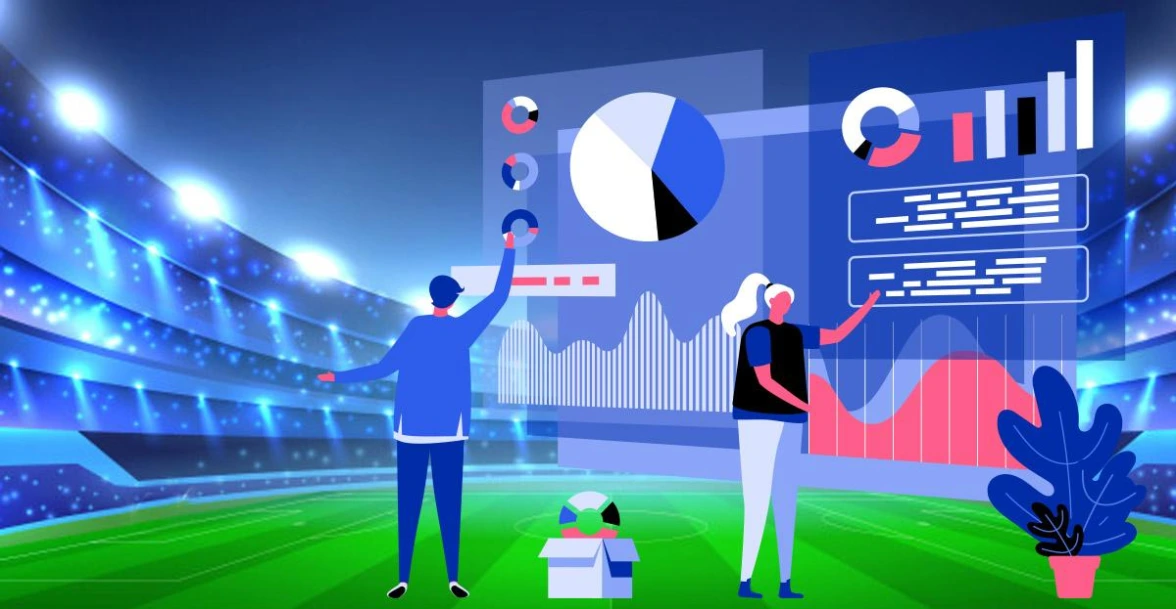Unlocking Performance and Strategy: The Rise of Sports Analytics

In recent years, the realm of sports has undergone a quiet revolution driven not by athletes or coaches, but by data. Sports analytics has emerged as a transformative force, reshaping how teams evaluate performance, strategize for competition, and engage fans. From traditional games like baseball and football to global spectacles like soccer and cricket, analytics now plays a pivotal role in decision-making processes. With technological advancements and access to real-time data, sports analytics has become an essential component in maximizing potential and gaining a competitive edge.
At its core, sports analytics refers to the use of statistical and mathematical models to analyze and interpret sports data. This can involve everything from player tracking and performance metrics to injury prediction and opponent analysis. Traditionally, decisions in sports were based on intuition and experience, but with the influx of data, teams can now make evidence-based decisions that are both precise and strategic. Coaches, managers, and scouts rely on analytics to identify strengths, weaknesses, and patterns that may not be visible to the naked eye.
One of the most well-known applications of sports analytics came with the rise of "Moneyball," a term popularized by the Oakland Athletics baseball team. Faced with budget constraints, the team used sabermetrics—a form of advanced baseball statistics—to identify undervalued players and build a competitive roster. This approach not only led to success on the field but also sparked a broader interest in analytics across all sports. Today, leagues like the NBA, NFL, Premier League, and even Formula 1 have fully embraced analytics to refine their game plans and optimize player utilization.
In team sports, performance data is collected from various sources, including wearables, cameras, and sensors. These devices capture detailed information such as heart rate, speed, distance covered, and positional tracking. For example, in soccer, GPS tracking systems measure how much ground a player covers during a match and at what intensity. This data helps coaches tailor training programs, monitor fatigue, and prevent injuries. Similarly, in basketball, shot charts and heat maps reveal shooting tendencies, enabling teams to adjust their defensive strategies accordingly.
Player recruitment and talent scouting have also been revolutionized by analytics. Traditional scouting methods often relied on subjective judgments, but data-driven approaches allow teams to objectively evaluate players based on a wide range of performance indicators. Metrics such as expected goals (xG), pass completion rates, and player efficiency ratings offer a more holistic view of an athlete’s potential. By leveraging these insights, clubs can make smarter investment decisions during transfer windows or draft selections.
Injury prevention is another crucial area where sports analytics proves invaluable. By analyzing biomechanical data and workload metrics, teams can identify patterns that might lead to injuries. For instance, tracking the accumulation of high-intensity efforts over time can signal when a player is at risk of muscle strain. With this knowledge, training loads can be adjusted proactively, reducing the likelihood of injury and increasing player availability. Moreover, recovery protocols can be optimized based on real-time health data, ensuring athletes return to peak condition safely and efficiently.
Beyond the playing field, sports analytics has found applications in fan engagement and business operations. Teams and leagues use analytics to understand audience behavior, ticket sales patterns, and merchandise preferences. This data helps in crafting personalized marketing campaigns and enhancing the overall fan experience. Streaming platforms and broadcasters utilize viewer data to determine optimal game times, highlight reels, and even camera angles. These innovations not only improve viewership but also open new revenue streams for the sports industry.
Sports betting is another sector where analytics has had a significant impact. Bettors and oddsmakers alike use predictive modeling to forecast game outcomes, player performances, and other variables. This has led to more accurate betting lines and informed decision-making for both casual fans and professional gamblers. The integration of real-time statistics and historical data enhances the reliability of these models, making sports betting a more data-driven enterprise.
Despite its many advantages, the rise of sports analytics is not without challenges. Data privacy and ethical concerns have surfaced, particularly with the use of biometric and health-related information. Teams must navigate these issues carefully to ensure compliance with regulations and protect the rights of athletes. Additionally, the human element of sports—emotion, unpredictability, and instinct—cannot be entirely captured by numbers. Analytics should be viewed as a supplement to, rather than a replacement for, human judgment and expertise.
Looking ahead, the future of sports analytics is poised for even greater innovation. Artificial intelligence (AI) and machine learning are being integrated to create predictive algorithms that offer real-time insights. Augmented reality (AR) and virtual reality (VR) technologies are also enhancing training and simulation experiences. With 5G connectivity and cloud computing, data can be processed and shared faster than ever before, bringing a new level of sophistication to sports analysis.
Source- https://www.marketresearchfuture.com/reports/sports-analytics-market-8743
Sports analytics has redefined the way games are played, coached, and experienced. It empowers teams to make smarter decisions, helps athletes reach their full potential, and deepens fan engagement. While it may never replace the thrill of a last-minute goal or a buzzer-beater shot, analytics ensures that behind every moment of brilliance lies a foundation of strategy, science, and statistical insight. As the sports world continues to evolve, analytics will remain at the heart of innovation, shaping the future of competition and performance.





